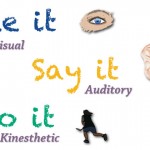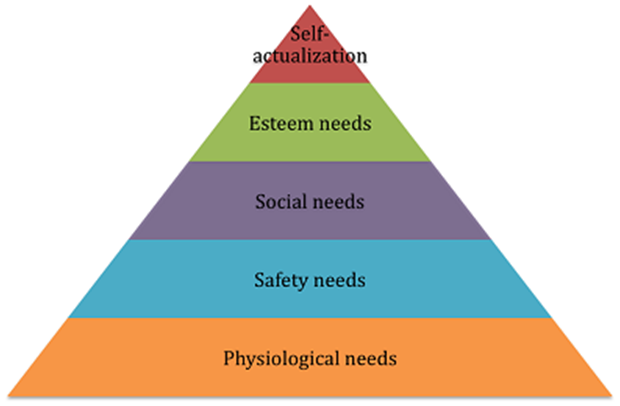Posts Tagged ‘Motivation’

Introduction Increasing range and complexity of technological developments employed in various industries has had dramatic implications on professional and even personal lives for many employees, along with impacting organisational culture. This article aims to assess the complexity of the technology employed in the industry as the prime cause of alienation in the workplace. The article starts with discussion of Marx’s Theory of Alienation followed by Blauner’s Theory of Technology and Alienation. Moreover, the article addresses a set of other relevant theoretical frameworks and approaches such as Nichools and Beynon’s (1977) criticism of Blauner and a brief analyses of studies conducted by Gallie (1978) and Zuboff (1988). It has been stated that “in the workplace the feeling of alienation mean that the individual has lost control over the process of production” (Sharma, 1998, p.22). Generally, alienation can be defined as “the feeling of being powerless to control one’s own destiny; a worker’s feeling of powerlessness caused by inability to control the work process” (Kronblum, 2011, p.474) and alienation is justly considered as an important issue from sociological viewpoint. Marx’s Theory of Alienation in the Workplace Marx specifies four types of alienation – alienation between worker and the work, alienation between workers, alienation of worker from the product, and alienation of worker from the process of work. Famously, Marx blames capitalism for the emergence of all of above types of alienation. It has to be noted that certain aspects of Marxist ideology including Theory of Alienation has been challenged from within communists by some philosophers such as Milovan Djilas, whereas different group communist philosophers such as Louis Pierre Althusser voiced against initiatives directed towards revising theoretical foundations of Marxism (Rehmann, 2013). Assessment of the impact of technology on the emergence of each of these types of alienation increases depth of this discussion. Specifically, with…

There are differences amongst employees in multiple levels and these differences do affect learning styles and capabilities of employees. This argument can be illustrated more effectively with the application of Honey and Mumford (1982) learning styles. According to this model learning can be divided into four different groups on the basis of individual preferences or styles: activists, theorists, pragmatists and reflectors. Activists include specific type of individuals who best learn by doing. Theorists, on the other hand, attempt to understand theoretical frameworks and they like to analyse core ideas behind the phenomenon to be learned. Pragmatists tend to be highly practical individuals, and accordingly unlike theorists pragmatists are interested in application of knowledge in real-life environment. Reflectors are observers who prefer to adopt a holistic approach towards the subject of learning. The model of Honey and Mumford learning styles has important practical implications in organisational settings. Senior level managers need to identify learning styles of key employees in order to be able to facilitate their learning more effectively. For example, employees with theorist learning style need to be assigned with tasks of analytical nature. Alternatively, individuals with advanced pragmatist learning styles need to be appointed in positions where problem-solving skills are prioritised. However, it has to be acknowledged that identification of learning styles of each individual employee is a challenging task and therefore this strategy needs to be applied only in relation to key members of the workforce. References Honey, P. & Mumford, A. (1982) “Manual of Learning Styles” London

Employee motivation tools can be divided into two categories: tangible and intangible. Salary and monetary bonuses is the main form of tangible motivation tools, whereas intangible motivation tools include sense of contributing to a great cause, recognition of employee performance by managers in verbal and written ways, celebrations of group and individual achievements etc. Both, tangible and intangible tools of motivation are going to be used in relations with chefs and sales assistant before and during the International Food Event. Tangible motivational tools offered to staff include financial compensation of £8 per hour. A set of intangible motivational tools to be used in this event include verbal encouragement of staff at all stages of the event, explanation of contribution of the event in terms of increasing the levels of cross-cultural awareness, and contributing to good cause as the profit to be made from the sale of food and ingredients are to be donated to the selected charity. Moreover, application of Hertzberg’s Two-Factor Theory (1959) assists in explaining staff and volunteer motivation practices in International Food Event. Two-Factor Theory makes a clear distinction between hygiene factors and motivators. Hygiene factors include salaries, adequate working conditions, appropriate management-employee relationships, acceptable levels of work-life balance etc. Hygiene factors are expected by employees to be in place and their presence may prevent dissatisfaction amongst employees. However, the presence of hygiene factors is not sufficient for employee motivation and employee motivation can only be achieved through the application of motivator factors. Accordingly, motivator factors to be applied in International Food Event include creating challenging, yet rewarding working environment, recognition of contribution of chefs, encouraging the sense of personal achievement due to the participation in the event etc. Alternatively, the issues of motivation at the event can be explained using the framework of Theory X and…

It has been noted that “research is a term used literally for any kind of investigation that is intended to uncover interesting or new facts” (Walliman and Walliman, 2011, p.1). The career research process I have used is the one proposed by Morgan (2010) and it consists of the following stages: 1. Assessment. The research process commences with assessment of personal skills and knowledge, as well as, passion in order to be able to identify genuine career aspirations. Specifically, my hobbies and spheres that attracted my interest the most have been deeply analysed during this initial stage of career research process. 2. Collecting Information. Both, primary and secondary data sources have been used to collect the relevant information during the second stage of career research process. Secondary sources of data used in research process comprise industry analyses, industry magazines and newspapers, and a range of books devoted to career management. Primary data sources used during the career research, on the other hand, include individuals already employed in the industry. 3. Presentation. This stage includes improvement of the verbal pitch, and development of a personal marketing plan as a prospective employee. A high level of importance of developing a personal marketing plan can be explained by increasing level of competition in the job marker for graduates with little or no formal job experiences. 4. Project management. Achievement of career objectives is approached as a project management with identification of short-term and long-term goals and organising regular reviews. 5. Interview preparation. Performances in interviews play a great role in the achievement of career objectives, and accordingly interview preparation is identified as a strategic stage in career progression. 6. Project update. This stage in career research process involves career progression monitoring conducted in a regular basis, and strategy modification if necessary. References Morgan, H. (2010) “The…

There is set of factors that effect team functioning. These factors include, but not limited to the nature of group norms, the level of cohesiveness, team leadership, rewards and others. Group norms resemble a code of conduct that specifies the extent of acceptable behaviour within the groups. As an important factor impacting team functioning, group norms need to be formulated in a clear and straightforward manner. Moreover, group members need to be communicated about penalties for deviating form group norms. Group cohesiveness can be explained as the level of attractiveness of the group to its members and is a major factor impacting group functioning. Managers need to be focusing on increasing the levels of cohesiveness through associating being group members with personal and professional growth, as well as, a range of tangible benefits. Moreover, leadership plays substantial role on the effectiveness of team functioning. Team leaders need to be able to command respect from team members and they need to be emotionally intelligent as well. Importantly, team leaders need to be able motivate each member of team in personal levels. Rewards associated with team performance can be listed as another important factor impacting team functioning. Rewards to team members need to comprise tangible elements such as financial compensation and various perks, as well as, intangible elements such as celebration of achievement, recognition of contribution of each individual team member in formal and informal ways. Failure to achieve the positive impact of the factors listed above may cause the formation of dysfunctional teams that are not well positioned to achieve organisational aims and objectives.

There are set of factors that impact employee behaviour in direct and indirect ways. These factors can be internal to organisation such as work culture, leadership, job responsibilities relationships with colleagues etc., or external such as the extent of work-life balance, changes in personal circumstances, employee cultural background, the extent of interpersonal skills etc. Work culture can be defined as “applying the general characteristics of culture to the specifics of how people work at a point of time and place” (Moran et al., 2007, p. 30) and work culture is one of the major factors impacting employee behaviour. Work culture is usually set by founder(s) of organisation, but it can change over a course of time. In simple terms, in order to survive employees have to fit in the current work culture. The quality of organisational leadership has also great impact on employee behaviour in a way that effective organisational leaders can inspire and motivate employees for greater performance, at the same time when ineffective leaders can cause employee knowledge, skills and competencies not being fully utilised. Employee job responsibilities can be mentioned as important factor impacting employee behaviour because extensive range of roles and responsibilities can cause burnout for employees with all the negative consequences. In personal level, the extent of work-life balance of employees has direct and significant implications on their behaviour. Specifically, lack of work-life balance is most likely to have negative implications on employee behaviour and performance in various levels. Similarly, employee-specific factors such as cultural background and interpersonal skills and competencies greatly affect employee behaviours. Therefore, managers need to take into account these differences when dealing with each individual employee. References Moran, R.T., Harris, P.R. & Moran S.V. (2007) “Managing Cultural Differences: Global Leadership Strategies for the 21st Century” 7th edition, Routledge

Employee morale is “a composite of feelings and attitudes that individuals and groups have toward their work, working condition, supervisors, top level management, and the organisations” (Leonard, 2012, p.375), whereas motivation can be defined as “the process that determines the reinforcement value of an outcome” (Kalat, 2010, p.375). Strategies offered to Managing Director in terms of repairing employee morale and boosting motivation include determining the types of employee motivation, applying to the most immediate needs of employees, adopting an individualistic approach in employee motivation, using an effective combination of tangible and intangible motivational tools, and achieving equity in motivation. The rationale behind each of these strategies is discussed below in greater details. 1. Determining the Types of Employee Needs It is important to determine types of employee need in order to repair employee morale and boost the level of motivation at Company. McClelland’s Achievement Motivation (1965) can be used to deal with this task. McClelland (1965) divides employee needs into three groups: need for achievement, need for power, and need for affiliation. It has to be noted that all three types of needs – need for achievement, need for power, and need for affiliation can be possessed by any one individual; nevertheless, specific type of need generally prevails over others for each individual. Accordingly, managers need to engage in employee motivation taking into account their specific needs. For example, employees that have need for power can be effectively motivated by positions with greater level of responsibility. Motivation of employees with a greater need for affiliation, on the other hand, can be achieved through publicly acknowledging their contribution to the achievement of organisational goals in front of groups in general, and their immediate team members in particular. 2. Applying to the Most Immediate Needs of Employees Maslow’s Hierarchy of…

The theory of Achievement Motivation proposed by David McClelland (1965) envisages that individuals have three different types of needs – need for achievement, need for power, and need for affiliation, but there is a difference between people in terms of the extent of influence of each need on their behaviour. It is important to note that “although workers may possess all these needs to some degree, each individual is most strongly motivated by one” (Lewis et al., 2011, p.150). Therefore, organisational managers are responsible to identify the nature of the need for each individual member of staff, and motivate them accordingly. References McClelland, D. (1965) “Toward a Theory of Motive Acquisition” American Psychologist

Employee motivational tools can be divided into two categories: tangible and intangible. Tangible motivational tools include money, holidays, and other tangible perks and benefits in the workplace, whereas intangible tools of employee motivation include verbal and written acknowledgement of employee contribution, celebration of memorable dates such as birthdays, anniversaries and achievements, developing effective work environment etc. A major internet company, Google can be mentioned as a model workplace where design of workspaces and working environment has been developed in a way that they have positive impact on the level of employee motivation. Specifically, Google offices around the world are have many unique features in terms of design and decorations and these are aimed at increasing the level of employee motivation and creativeness. Organisational managers are recommended to recognise the level of employee motivation as one of the most crucial factors of competitive advantage in the market. Moreover, managers are recommended to use both; tangible, as well as, intangible motivational tools need to be used by management in an effectively integrated manner in order to benefit from highly motivated workforce.

The theoretical framework of Maslow’s Hierarchy of Needs (1943) is considered by many to be the most substantial theory in the area of human motivation. Maslow (1943) categorises human needs into the five different levels and states that are evolved in a sequential manner. Maslow’s Hierarchy of Needs Psychological needs include basic human needs that are necessary to sustain life such as food, clothing, sleeping etc. Satisfaction of psychological needs in individual results to an emergence of safety needs that include being free of fear or deprivation of basic needs. The next level of needs is social needs that follow after the satisfaction of safety needs. Namely, social needs relate to the sense of acceptance by various groups. Esteem needs, emerging in the next stage “motivates a person to contribute his or her best to the efforts of the group in return for the numerous forms of reward that recognition can assume” (Montana and Charnov, 2008, p.239). Adequate satisfaction of esteem needs makes self-actualisation needs predominant. This stage of need is closely associated with maximising an individual’s potential regardless of its nature. The practical implications of “Hierarchy of Needs” are that managers must adopt an individual approach when motivating their subordinates addressing the immediate needs of each individual employee. According Maslow (1943) in their practices organisational managers need to address more immediate needs of employees in order to achieve the highest level of motivation. In other words, trying to appeal to self-esteem needs of an employee that has not satisfied his belonging needs is not the best approach in terms of achieving a high level of employee motivation. References Maslow, A.H. (1943) “The Theory of Human Motivation” Psychological Review, 50(4) Montana, P.J. & Charnov, B.H. (2008) “Management” Barron’s
